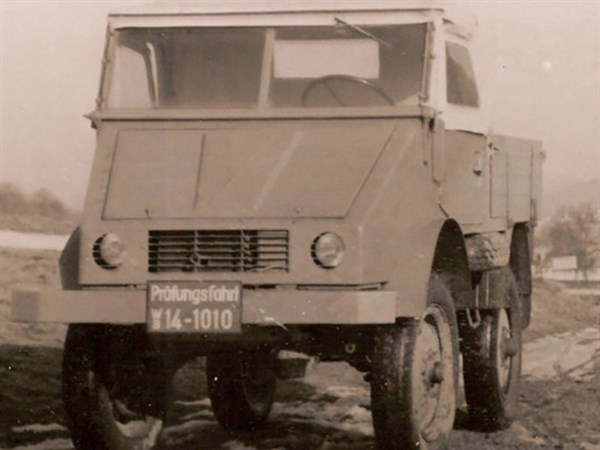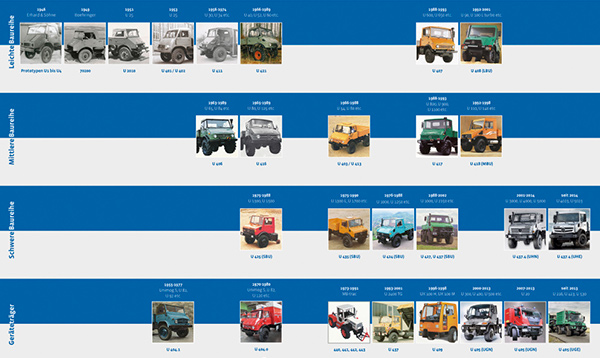The post-war vehicle was designed to handle the growing need for agricultural transport and continues to do that to this day
Daimler is celebrating the 70th birthday of the Unimog by looking back at the original model that came into being after World War II.
According to the truck maker, it was October 9, 1946 when the Unimog Prototype 1 completed its first test drive with chief designer Heinrich Rößler at the wheel and a fully-laden tray of wood.
Travelling on rough forest roads in the post-war period, the original bonnet-free truck was the result of German supply shortages at the time.
And while it was tested for the first time in 1946, its concept was born over a year earlier by former aircraft engine development head at Daimler-Benz AG Albert Friedrich.
In June, 1945, Friedrich came up with the idea of creating an agricultural motorised vehicle that could help increase agricultural productivity and took it to Stuttgart-Untertürkheim to speak with the company.
On August 4 a blueprint for the vehicle was developed by a Daimler-Benz AG engineer and on September 7 it was presented to the company’s board of directors.
Despite receiving little interest from those in charge, the blueprint was submitted to the Production Control Commission of the responsible American military authority, with an application to manufacture ten test vehicles.
Gaining approval on November 20 from the Food and Agricultural Group of the British and American occupied zone, Friedrich enlisted the work of metalwork company Erhard & Söhne in nearby Schwäbisch Gmünd to create the vehicles.
On January 2, 1946 the project was handed onto Friedrich’s employee, designer Heinrich Rößler.
The first driveable prototype in December 1946 with a Diesel engine (OM 636) and truck tyres.
Creating a design that is still used in the U 4023 / U 5023 Series Unimog trucks today, the original models featured an engine and gearbox positioned to the right of the middle line of the vehicle.
Daimler says this meant that the axles could be at right angles to the torque tubes, the parts which protect the drive shafts.
As a result, only four drive joints were needed for the chassis.
Between January and March, 1946, the team created a vehicle that could reach 50km/h, twice as fast as a tractor.
It included sprung and damped axles; all-wheel drive and differential locks at the front and rear; brakes on the front and rear axles; frame design similar to cars and trucks; two-seater cab with a closed cover and upholstered seats; auxiliary load area over the rear axle with 1-tonne load-bearing capacity; static weight distribution: 2/3 on the front axle, 1/3 on the rear axle; implements attachable on the front, middle, sides and rear; power take-off shafts at the front, middle and rear; and power take-off for implements.
In March, a member of the team, Hans Zabel, came up with the Unimog name by shortening Universal-Motor-Gerät (universally applicable motorised machine).
Less than a decade later the Unimog could be attached to 66 different agricultural appliances.
And 70 years later, it has been released in 30 different models and been sold almost 400,000 times.



